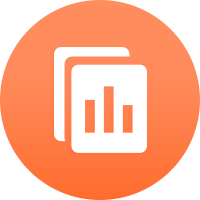2024-11-09 08:44
業內Forex Basics
Action Forex
HomeTutorialsTrading
Easy to grasp, difficult to master.
Forex and FX are interchangeable abbreviations for Foreign Exchange, which is a term used to refer to the global currency markets. As complex as these markets are, currencies are probably the easiest of all the asset classes for beginners to get to grips with. Even people who have never traded before will have a basic understanding of what currency trading involves. After all, everyone is familiar with using their national currency, and many have had the experience of converting this currency into another one of a different value when travelling. This, in a nutshell, is what currency trading is all about. Currencies differ in value and these differences are constantly changing; buying an undervalued currency as it begins to rise yields profits, selling an over-valued currency as it begins to fall also yields profits. Conversely, selling in the former example and buying in the latter will cause you to incur losses. Simple enough, right? Yes, but learning to discern the influences that cause these fluctuations, and being able to act upon them in a timely and consistently profitable way, that’s the real challenge of trading Forex.
Exchange rates explained
Exchange rates are the relative values between currencies that belong to different countries or economic regions. When you are presented with an exchange rate, say for EUR/USD, you are being quoted the value of one currency in relation to the other (in this case the euro against the US dollar). This is why you see two currencies in an exchange rate quote but only one figure; the value of one is determined by how much of it you can buy with the other. It makes no sense to think in terms of absolute values when it comes to currencies as their values are interdependent. This is one of the main differences between trading Forex and trading equities or commodities.
The first currency in every pair is called the base currency, this is the one that you are being given the value of. It is also the one on which you are performing the action of either buying or selling when trading Forex. The second currency in the pair is the quote or counter currency, the figure quoted in an exchange rate is denominated in this currency. Essentially when you see an exchange rate you are being informed what the base currency is worth in terms of the quote currency. So when looking at an exchange rate for EUR/USD you are being quoted what the euro is worth in US dollars, or more accurately how many US dollars are required to purchase 1 euro.
So a EUR/USD exchange rate of 1.33 means that 1 euro is worth 1 dollar and 33 cents, or that $1.33 is required to purchase 1 euro. Currencies are always quoted in this way, were it not for this convention 1 euro would just be worth 1 euro, and that would tell us nothing about anything.
When EUR/USD rises, this means that the euro is growing higher and/or the dollar is getting weaker. As a Forex trader you can position yourself in different ways, taking advantage of any eventuality. You can buy, or go long on EUR/USD when you think the euro is likely to rise, or when the US dollar is likely to fall. You can also sell, or short EUR/USD when you foresee that the euro is due to drop in value, or when you think the US dollar is about to rise.
A closer look at currency pairs
All currencies are given a three letter abbreviation known as that currency’s ISO code, in most cases the first two letters refer to the country, and the third letter refers to the name of the currency in question.
The most commonly traded currencies are known as the majors. These are: The US dollar (USD), the euro (EUR), the Japanese yen (JPY), the Great British pound (GBP), the Swiss franc (CHF), the Canadian dollar (CAD), the Australian dollar (AUD) and the New Zealand dollar (NZD).
The major pairs all involve USD being paired with each of the other major currencies listed above.
Major Currency Pairs
EUR/USD (Euro-zone/ United States)
USD/JPY (United States/ Japan)
GBP/USD (United Kingdom/ United States)
USD/CHF (United States/ Switzerland)
USD/CAD (United States/ Canada)
AUD/USD (Australia/ United States)
NZD/USD: (New Zealand/ United States)
Pairs that do not feature the US dollar as either base or quote are known as the cross pairs, or crosses. The main crosses consist of any of the major currencies listed above (except, of course, USD) crossed with each other (the most common cross pairs are those which feature the euro, pound sterling, or yen).
One thing to keep in mind is that the euro is always the base currency in any pair. It’s easy enough to reverse an exchange rate though, if you need to. So, for instance, if you want to find out the value of USD/EUR (how many euros it takes to purchase one US dollar) all you have to do is divide 1 by the EUR/USD exchange rate (1/1.33 = 0.75). In this example one US dollar can
贊 0
FX1793146900
Trader
熱門討論
業內
哎,现在明白不赌就是赢啊
行情分析
美元/加元技术面
技術指標
外汇技术分析之波浪理论
業內
[活動]論交易,贏取200元話費補貼
技術指標
EZ.Fury Kite是基于趋势指标MA进行判断
技術指標
指标派是什么?
市集分類

平臺

展會

代理商

招聘

EA

業內

行情

指標
Forex Basics
 | 2024-11-09 08:44
| 2024-11-09 08:44
Action Forex
HomeTutorialsTrading
Easy to grasp, difficult to master.
Forex and FX are interchangeable abbreviations for Foreign Exchange, which is a term used to refer to the global currency markets. As complex as these markets are, currencies are probably the easiest of all the asset classes for beginners to get to grips with. Even people who have never traded before will have a basic understanding of what currency trading involves. After all, everyone is familiar with using their national currency, and many have had the experience of converting this currency into another one of a different value when travelling. This, in a nutshell, is what currency trading is all about. Currencies differ in value and these differences are constantly changing; buying an undervalued currency as it begins to rise yields profits, selling an over-valued currency as it begins to fall also yields profits. Conversely, selling in the former example and buying in the latter will cause you to incur losses. Simple enough, right? Yes, but learning to discern the influences that cause these fluctuations, and being able to act upon them in a timely and consistently profitable way, that’s the real challenge of trading Forex.
Exchange rates explained
Exchange rates are the relative values between currencies that belong to different countries or economic regions. When you are presented with an exchange rate, say for EUR/USD, you are being quoted the value of one currency in relation to the other (in this case the euro against the US dollar). This is why you see two currencies in an exchange rate quote but only one figure; the value of one is determined by how much of it you can buy with the other. It makes no sense to think in terms of absolute values when it comes to currencies as their values are interdependent. This is one of the main differences between trading Forex and trading equities or commodities.
The first currency in every pair is called the base currency, this is the one that you are being given the value of. It is also the one on which you are performing the action of either buying or selling when trading Forex. The second currency in the pair is the quote or counter currency, the figure quoted in an exchange rate is denominated in this currency. Essentially when you see an exchange rate you are being informed what the base currency is worth in terms of the quote currency. So when looking at an exchange rate for EUR/USD you are being quoted what the euro is worth in US dollars, or more accurately how many US dollars are required to purchase 1 euro.
So a EUR/USD exchange rate of 1.33 means that 1 euro is worth 1 dollar and 33 cents, or that $1.33 is required to purchase 1 euro. Currencies are always quoted in this way, were it not for this convention 1 euro would just be worth 1 euro, and that would tell us nothing about anything.
When EUR/USD rises, this means that the euro is growing higher and/or the dollar is getting weaker. As a Forex trader you can position yourself in different ways, taking advantage of any eventuality. You can buy, or go long on EUR/USD when you think the euro is likely to rise, or when the US dollar is likely to fall. You can also sell, or short EUR/USD when you foresee that the euro is due to drop in value, or when you think the US dollar is about to rise.
A closer look at currency pairs
All currencies are given a three letter abbreviation known as that currency’s ISO code, in most cases the first two letters refer to the country, and the third letter refers to the name of the currency in question.
The most commonly traded currencies are known as the majors. These are: The US dollar (USD), the euro (EUR), the Japanese yen (JPY), the Great British pound (GBP), the Swiss franc (CHF), the Canadian dollar (CAD), the Australian dollar (AUD) and the New Zealand dollar (NZD).
The major pairs all involve USD being paired with each of the other major currencies listed above.
Major Currency Pairs
EUR/USD (Euro-zone/ United States)
USD/JPY (United States/ Japan)
GBP/USD (United Kingdom/ United States)
USD/CHF (United States/ Switzerland)
USD/CAD (United States/ Canada)
AUD/USD (Australia/ United States)
NZD/USD: (New Zealand/ United States)
Pairs that do not feature the US dollar as either base or quote are known as the cross pairs, or crosses. The main crosses consist of any of the major currencies listed above (except, of course, USD) crossed with each other (the most common cross pairs are those which feature the euro, pound sterling, or yen).
One thing to keep in mind is that the euro is always the base currency in any pair. It’s easy enough to reverse an exchange rate though, if you need to. So, for instance, if you want to find out the value of USD/EUR (how many euros it takes to purchase one US dollar) all you have to do is divide 1 by the EUR/USD exchange rate (1/1.33 = 0.75). In this example one US dollar can
贊 0
我也要評論
提問
0條評論

還沒人評論,趕緊搶佔沙發


提問
還沒人評論,趕緊搶佔沙發